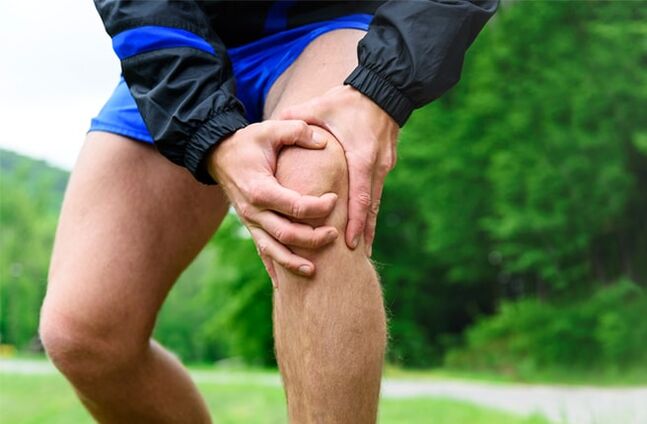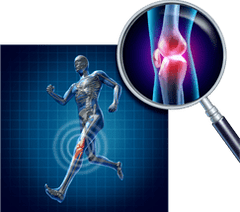Arthrosis (osteoarthrosis or deformation of osteoarthrosis (DOA) or deformation of arthrosis)- The disease of the joints, in which the joint cartilage is affected in the initial stages, then in the muscles, connections, nerves, and bone tissue are included in the pathological process.
Arthrosis is a disease that develops for various reasons.These include metabolic disorders, injuries, intoxication, etc.
Patients usually call "arthrosis" any joint disease that experiences pain, restrictions on mobility and other unpleasant sensations in the area of one or more joints, which is not always true.Osteoarthritis and the pain associated with it develop as a result of "aging" of the joints due to the effects of various negative factors, but the causes of joint pain can be both infection and injuries, and in these cases we are talking about other pathologies.
Statistics

Up to 70% of patients when prescribing a GP, therapist, neurologist, surgeon, rheumatologist complain of joint pain.Most often these are pain in the lower back and in the area of large joints (knee, thigh).Throughout the world and in particular in Russia, up to 70% of cases of long -term inability to work fall on osteoarthritis.There are quite a few patients - up to 10% of those who consisted of the doctor as a result of advanced arthrosis, receive damage and need constant help.Arthrosis is one of the leading reasons for the premature departure of a person from full social life, in statistics is second only for coronary heart disease.
The likelihood of the development of arthrosis is increased with age: in people over 50 years of age, this occurs in 27% of cases, in the elderly older than 70 years, the spread is 97% due to the financing age related to the age of the joints and their normal functioning.
Reasons and development
The main factor in the development of arthrosis is a violation of the nutrition of the articular cartilage, which leads to its destruction.This is not so important as a result of which this happens (great excess weight, professional sport, characteristics of work, hormonal disorders, congenital joint defects, etc.), the result is the same: the result:
- Changes begin in the articular cartilage that lead to loss of elasticity;Micro -cracks appear in the thickness of the cartilage;
- The blood supply to the joint is impaired, the production of joint fluid is reduced, the joint mechanics are changed;
- Then all joint structures, adjacent muscles and nerve endings are included.
The listed degenerative disorders lead to the development of the symptoms of arthrosis, and the disease "begins" the moment when the constant mechanical load becomes transcendental to the joint (or joints) and triggers the processes of its destruction.
Symptoms

Unlike other joint pathologies, arthrosis has been developing for many years, long and imperceptible to humans.The moment the body signals the problem in the joint with severe pain, the pathological process in it is already starting.
Pain is the main symptom of arthrosis (osteoarthrosis), in the early stages of pain is not very pronounced, weak, more comparable with discomfort.The unpleasant sensations in the joints occur after the load are performed independently, without any medical or healing intervention, but they quickly become tangible and limit the usual human mobility.
Pain can occur at rest or at the very beginning of the movement (the so -called "beginning"), for example, in the morning after sleep or after a long sitting during the day in one position when they move, they pass.Arthrosis is also characterized by a night break, which also quickly decreases with the onset of motor activity.Patients encountered by joint problems usually say that to eliminate the unpleasant sensations, "knead the bones", "awaken the joints", which generally accurately characterizes this condition.
The pain occurs not only due to the disorders of the joint itself.When all components of the joint, muscles and nerve endings are involved in the process, the pain becomes varied and painful: "shooting" along the nerve, spread by muscle.The blood supply to the joints, nerves, muscles is impaired, and degenerative changes are rapidly occurring.
Temporary or constant restrictions on joint mobility (contracture) develop due to serious pathological changes in the joint and muscle tissues.For example, with arthrosis of the hip joints, the shortening of the limb, the "slope" of the pelvis and the curvature of the spine appear.
The crunch in the joints in the initial stages is almost invisible, but as the disease develops when movement, it becomes constant.This symptom psychologically refers to patients with arthrosis even more than pain, as it shows serious disorders, aging of the body, and in particular the musculoskeletal system.
In the short stages of arthrosis, the joint is deformed, which is associated with the loss of curvature of all joint surfaces, bone growth, reduction of the amount of joint fluid and subluxation of the joint.
Stages
Depending on the severity of the symptoms, several stages of osteoarthritis are distinguished.

In the first stage there is no pain at rest and during a moderate load they appear only after high load (fitness, weight transfer, running) or after a long static position.One does not have restrictions and difficulties in the movement.Drug treatment is not required.
In the second stage of pain, pronounced and constantly, quickly arises under the influence of provocative factors (long walking, physical activity), do not pass independently.The patient is limited to movement, the mobility of certain joints - the knee, the hip joint and others is sharply limited.Medical attention is required, treatment regimen, including medicines and methods without medicine, should be prescribed.
In the third stage, the patient moves with difficulty, needs constant care, painful pain.As a rule, surgical treatment (endoprothetics) and massive physiotherapy are required to restore the quality of life.
The symptoms of osteoarthritis already occur at a young age and in this case it is necessary not to ignore them but to consult a doctor.Timely prescribed treatment will support the normal function of the joints and help avoid the rapid progress of the disease.




























